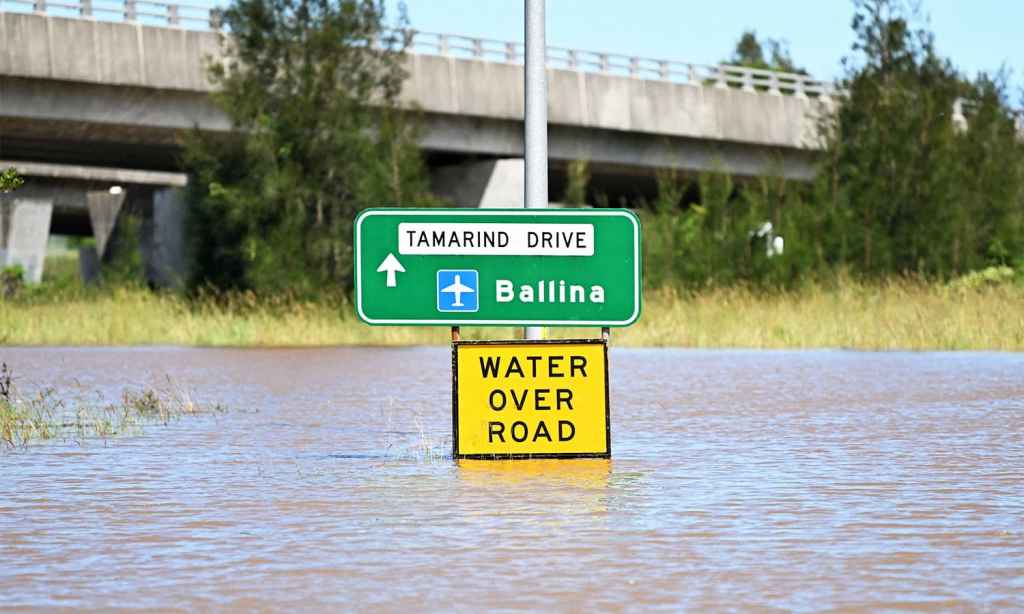“There are going to be heartbreaking scenes across NSW today,” Premier Dominic Perrottett has warned, with 76 evacuation orders issued across the state as the flooding continues to hit hard.
“Right along the coast of NSW, from the Queensland border to the Victorian border, everything is wet, everything is saturated,” the Bureau of Meteorology’s Dean Narramore has said. “It only takes just a few millimetres now to start seeing rises on rivers, creeks and streams.”
“While the threat of really dangerous and life-threatening weather has moved a little bit further north towards the northern parts of the Illawarra through Sydney metro, Gosford and the Hunter, the threat for the South Coast is still continuing.”
Severe weather warnings have been issued by the BOM as a band of low pressure off of the central coast of New South Wales moves southwest.
A number of flood evacuation orders remain in place, including for communities across western Sydney along the Hawkesbury-Nepean. Check @NSWSES for the latest warnings. If you’re in a warning area, take action. #NSWRFS volunteers will be out again today helping where they can. pic.twitter.com/dLUNTcf3X8
— NSW RFS (@NSWRFS) March 2, 2022
As it approaches central and south-eastern parts of the state this morning, risks of heavy rain, damaging winds, abnormally high tides and possible coastal erosion are expected.
The BOM has said that rainfall of 100-300mm over the next 24 hours is possible, which is likely to impact communities in metropolitan areas, the Illawarra, and parts of the Mid North Coast, the Hunter, the South Coast, and the Central and Southern Tablelands.
Multiple major flood warnings remain in north-eastern New South Wales including the Hawkesbury, Nepean, Richmond, Clarence and Weir rivers.
Communities are also being warned of potential flash flooding in local creeks and streams.
The BOM recommends that communities prepare for flood impacts and has encouraged them to keep up to date with the latest forecasts and warnings on their website and the BOM Weather app.
Which Areas Are Affected?
There are currently 161 evacuation orders, evacuation warnings, or major flood alerts across the state, with 13 in the Sydney Northern Region, 68 in the Sydney Western Region, and 20 in the Sydney southern region.
76 of these orders are evacuation orders, with an additional 18 evacuation warnings. In total, more than half a million people in NSW are being told to either evacuate or prepare to evacuate today.

NSW Emergency Services Minister Steph Cooke has said that she is concerned about the communities across south-west Sydney, the Central Coast, Hunter and Sydney in general.
“We know that you are weary, but we need you to stay with us. We need you to keep listening out to the warnings, to the information that our emergency services organisations, particularly our combat agency, the SES, are putting out this morning,” she said.
“If you are asked to leave your home, please do so, please do not put yourself or your family at risk and please don’t put the lives of our emergency services volunteers at risk.”
You can check the current and constantly updating evacuation orders for your area at the SES website.
How to Prepare for a Flood
If you’ve been told to evacuate, do so immediately. Leaving it to the last minute is incredibly dangerous and potentially life-threatening.
Do not drive, walk, or ride through floodwaters and get to high ground away from flooded areas as soon as you can.
The SES has advised that when a flood warning is issued, you need to start preparing to get out. Stack all of your important possessions on benches or tables, secure objects that are likely to float, and move all chemicals and waste containers well above floor level.
#SydneyStorm
Please help elderly/vulnerable neighbours now
Please move your animals ahead of time..
Get cats into carriers, dogs with a harness preferably.
PLEASE do not wait. https://t.co/1oz2XLgfj1— Ban live export. 🐑🐐🐎🐃🐝 (@BspeaksLm) March 2, 2022
In the event of an evacuation, first, check which roads are open and which are closed which you can do here. Evacuation centres have been established across NSW, with a full list available here.
Take all of your important papers, photos, valuables, and mementos and store them safely, ready for travel. Listen to local radio services for up-to-the-minute updates on where to go.
Make sure you turn off your electricity and gas at the mains switch before you leave and secure any loose gas bottles. Bring your pets with you and stick with friends or family if possible.
The SES has a guide for creating an emergency kit which you can find here and includes things like torches, spare batteries, first aid kits, candles, and a supply of food and fresh water.
Stay safe, don’t take unnecessary risks, and know that everything is replaceable except yourself.
Read more stories from The Latch and subscribe to our email newsletter.







